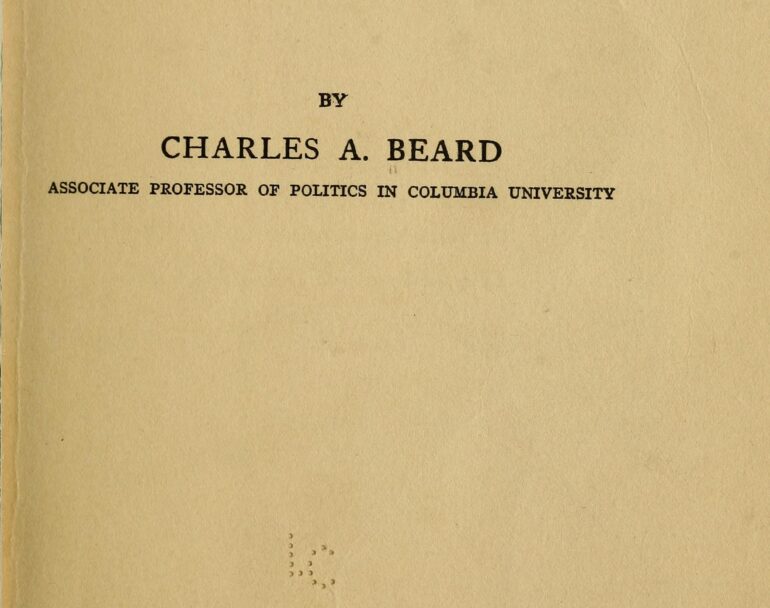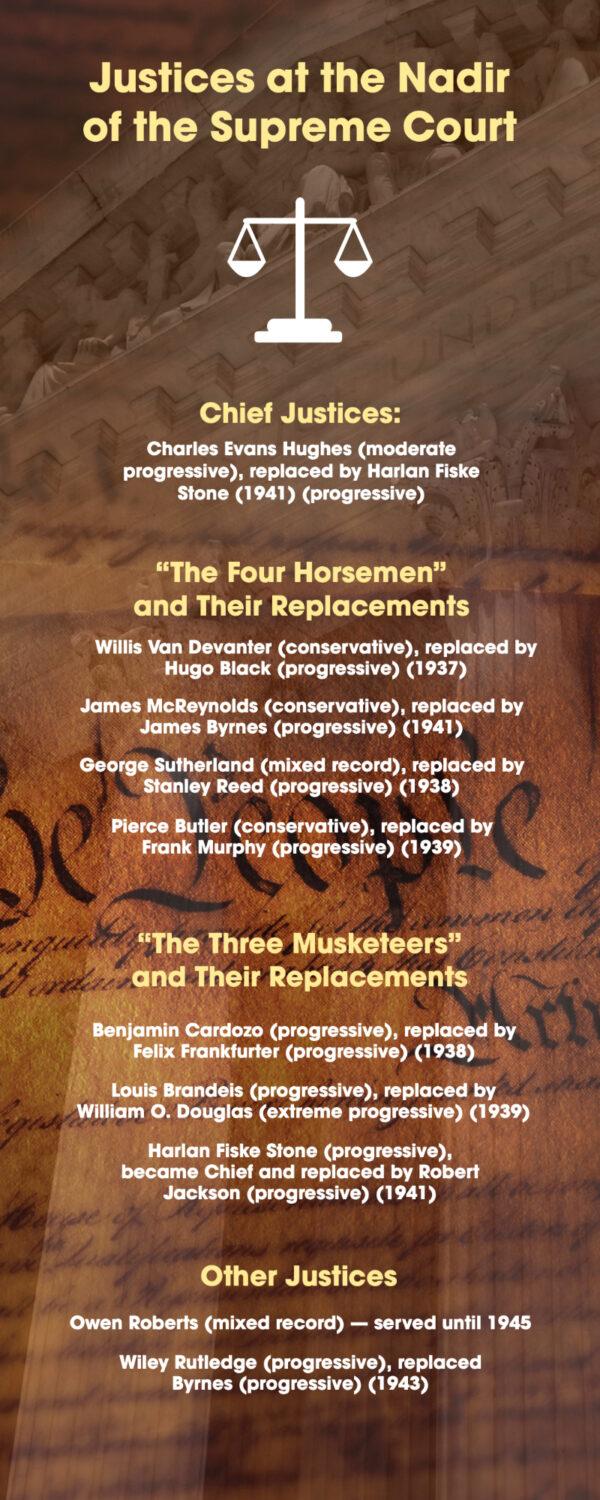
How the Supreme Court Rewrote the Constitution – Part 6
By Rob Natelson
The first, second, third, fourth, and fifth installments in this series traced how the Supreme Court responded to President Franklin D. Roosevelt’s efforts to break constitutional limits and create a powerful federal government. After trying to balance the demands of FDR’s “New Deal” with the Constitution, the court successively abandoned the Constitution’s limits on federal spending, federal land ownership, and federal economic regulation.
1937 to 1944: The Court Attacks Civil Liberties
Even so, the Constitution’s protections for civil liberty aren’t complete. For example, most modern Americans would be surprised to learn that the First Amendment’s guarantee of “the freedom of speech” didn’t protect against prosecutions for blasphemy. Still, the best way to guard constitutional rights is to enforce them according to their real meaning—that is, as they were understood when adopted. Judges who purport to widen constitutional rights will narrow them as well.
1937 to 1938: Some Rights are More Equal than Others
The Constitution contains two guarantees of “due process of law,” one in the Fifth Amendment that protects against federal abuses and one in the Fourteenth Amendment that protects against state abuses. As originally understood, these due process clauses meant only this: When the government prosecutes you criminally or civilly, it must follow pre-established law. It may not change the rules as it goes along.
 During the later 20th century, liberal activist judges stretched the due process clauses to protect invented “rights,” such as abortion. During the early 20th century, conservative activist justices did something comparable. In the name of freedom of contract, they struck down some minimum-wage and maximum-hours laws, claiming that those measures violated due process.
During the later 20th century, liberal activist judges stretched the due process clauses to protect invented “rights,” such as abortion. During the early 20th century, conservative activist justices did something comparable. In the name of freedom of contract, they struck down some minimum-wage and maximum-hours laws, claiming that those measures violated due process.
In early 1937, however, a five-justice majority effectively overruled the conservative due process precedents. The case was West Coast Hotel Co. v. Parrish (pdf).
West Coast is famous because historians used to believe that FDR’s court-packing plan had bullied Justice Owen Roberts into voting with the court’s liberals in that case. This was the alleged “switch in time that saved nine.” We now know that’s not true. Roberts’s vote had been determined before the court-packing plan was announced.
In 1938, United States v. Carolene Products (pdf) essentially confirmed the West Coast decision. Carolene Products is famous as well. When Chief Justice Harlan Fiske Stone wrote the opinion for the court, he added a celebrated footnote known to attorneys as “Footnote 4.”
Footnote 4 said it was “unnecessary to consider now” whether the court should start favoring some constitutional rights over others. This communicated to court-watchers that the justices would start doing just that.
Liberal commentators celebrate Footnote 4 because it offered super-protection for rights liberals like (such as the procedural guarantees enjoyed by accused criminals) and a downgrade of rights liberals don’t favor (such as protection for contracts). But in the immediate aftermath of Footnote 4, the court downgraded both categories.
1939: The Court Guts the Second Amendment
The first right diminished was the Second Amendment right to keep and bear arms. United States v. Miller (pdf), an 8–0 decision, was issued on May 15, 1939. The author of the court’s opinion was Justice James McReynolds. His opinion improperly narrowed the right to keep and bear arms—just as his prior opinions had improperly expanded the due process guarantee.
Jack Miller and Frank Layton were convicted of possessing a sawed-off shotgun that wasn’t registered under federal law. The Second Amendment was their defense: “A well regulated Militia, being necessary to the security of a free State, the right of the people to keep and bear Arms, shall not be infringed.” The court recognized that, in this context, “militia” refers to all able-bodied males.
Construed correctly, the Second Amendment protects the use and ownership of portable (“bear-able”) weapons used for three purposes: (1) To prepare Americans to serve in a federalized militia for the common defense of the country, (2) to enable Americans, both individually and as part of the state militias, to defend themselves against a central government turned tyrannical, and (3) individual self-defense.
The Attack on Habeas Corpus and Trial by Jury
In 1942, the United States was at war with Nazi Germany. In June 1942, the Germans sent two submarines to American shores and dropped off eight would-be saboteurs. All eight were young men who had lived for long periods in the United States. Two were U.S. citizens.
At least two of the men (including one U.S. citizen) accepted their assignment only to escape from Germany and return to the United States. After landing, they surrendered themselves to the FBI. They told the bureau everything, and the agency soon picked up the other six.
Roosevelt was understandably furious that German submarines were able to discharge saboteurs onto U.S. shores. He ordered the FBI to transfer the men to military control. He arranged for them to be tried by a military commission. His goal was to receive immediate “guilty” verdicts and to execute them promptly.
And so the military trial proceeded. Counsel for the prisoners launched a spirited defense. Counsel showed the court that two defendants had turned states’ evidence. Counsel also pointed to mitigating circumstances involving some of the other defendants.
It didn’t matter. The fix was in. All were condemned to death. The FBI had promised pardons to the two who had turned state’s evidence, but Roosevelt didn’t honor that promise. He merely commuted their death sentences to long prison terms.
Let me be clear: It’s hard to be sorry for the saboteurs. They were operating outside the law of war, they were serving an evil cause, and they understood the risks. That said, it remains true that the justices’ conduct was unworthy of the highest court in the land. A key reason for written opinions is to force judges to consider and write out their rationale before announcing a decision. Sometimes the writing process induces judges to change their minds. Also, written opinions ensure that, in multiple-member courts, everyone in the majority is on the same page. Postponing the opinion to hasten the executions was, at the least, unprofessional.
As it turned out, after the executions, the justices learned that they weren’t all on the same page. It took nearly three months to craft a written opinion to which everyone on the court could agree.
Judges who rewrite some parts of the Constitution will rewrite others.
This and subsequent articles first appeared in the Epoch Times starting on 1/19/2022.